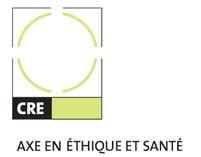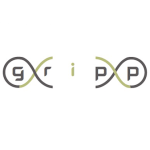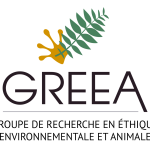
Donor Conception: The Debate Surrounding the Right to Know One’s Origins
Dossier prepared by Vardit Ravitsky.
The use of donor sperm and egg to conceive a child, also known as ‘third-party assisted conception’, has become a well-established practice since the advent of IVF. No confirmed data exist, but it is estimated that hundreds of thousands of children have been born to date world-wide using donor conception.
Donor conception was traditionally based on the assumption that donors should remain anonymous. This was meant to protect donors from liability in a period when legal mechanisms were not yet developed to address the challenges of donor conception (Blyth and Frith 2009). It was also meant to protect the status of non-genetic parents, from a legal as well as from a psychosocial perspective. Protection of donor anonymity was also based on the notion that donor offspring are better off shielded from the truth about the circumstances of their conception and that access to donor identity would therefore be irrelevant. The perspectives of donor-conceived individuals themselves have initially been a neglected element in the growing practice of donor conception.
Over the years, however, the interests of the donor-conceived in having access to the identity of donors have come to the forefront. As the first generation of donor-conceived offspring came of age, these young adults started sharing their perspectives and many were telling a story of psychological distress, describing a strong need to know their genetic origins as an essential part of constructing their identities. Their perspectives and interests have now become the center of a lively academic debate (McGee et al. 2001; Patrizio et al. 2001) as well as a driver for support networks, educational campaigns and legislative changes (Blyth and Frith 2009).
While most countries still maintain the norm of protecting donor anonymity, a trend towards openness is gathering momentum and a growing number of countries are adopting laws and regulations banning anonymous donation. To date, these jurisdictions include Sweden (1985), Austria (1992), Victoria (Australia) (1998), Switzerland (2001), The Netherlands (2004), Norway (2005), the UK (2005), Finland (2007), Western Australia (2004), New Zealand (2005) and New South Wales (Australia) (2010) (Blyth and Frith 2009; Thorpe et al. 2012).
In North America, donor anonymity is still well established. In the U.S., legislators have only recently taken a first step in the direction of allowing offspring access to information about donors. Effective July 22, 2011, a new law in the state of Washington requires sperm and egg donors to provide a medical history and identifying information to fertility clinics and allows donor-conceived individuals to contact clinics and request this information once they reach the age of 18 (Washington 2011). This is a significant legislative milestone in a country that has consistently shied away from any type of regulation of the infertility industry. Although donors may still veto disclosure of their identifying information, offspring have guaranteed access to at least non-identifying medical history, a tremendous improvement over the current reality in all other U.S. states where fertility clinics can destroy donor medical records at whim before the child turns 18.
In Canada, although the Assisted Human Reproduction Act of 2004 mandated the registration of information related to donors and donor-offspring, this measure was never implemented and consequently Canadian clinics can also destroy donor records. This has been the experience of Olivia Pratten, a journalist conceived through anonymous sperm donation who has been unsuccessfully attempting for years to access medical and identifying information about her donor. Pratten decided to take her case to court to try and change the legal reality for future generations (Motluk 2011). Interestingly, a similar case heard by the High Court in the United Kingdom in 2002 (Rose v. Secretary of State for Health) was partially responsible for consequent legislation banning anonymous gamete donation.
Pratten argued that donor-conceived individuals are being systematically discriminated against, in comparison to adoptees that have legal rights to information about their genetic origins. In May 2011, the Supreme Court of British Columbia rendered a decision in her favour (Pratten v. British Columbia (Attorney General) 2011b), but the Attorney General of British Columbia appealed the decision shortly after and won (Pratten v. British Columbia (Attorney General) 2012). A subsequent appeal by Pratten to the Supreme Court of Canada was unsuccessful as the Court refused to hear the case (Olivia Pratten v. Attorney General of British Columbia et al. 2013). Canada thus missed a unique opportunity to address the issue at the federal level and in coming years Canadian provinces will have to make legislative decisions on this topic.
The legal and the ethical debate surrounding the right of donor conceived individuals to know the truth about their conception and to have access to the identities of their donors is far from over. In the meanwhile, societies who allow donor conception can enhance educational efforts, endorse a culture of openness and acceptance, fight the stigma of infertility and promote a more nuanced understanding of family relationships, including genetic relatedness and non-relatedness.
—————————————-
Blyth, E. & Frith, L. (2009). « Donor-Conceived People’s Access to Genetic and Biographical History: An Analysis of Provisions in Different Jurisdictions Permitting Disclosure of Donor Identity ».
McGee, G., Brakman, S.-V. & Gurmankin, A. D. (2001). « Gamete donation and anonymity: Disclosure to children conceived with donor gametes should not be optional ». Human Reproduction, 16, 2033-6.
Motluk, A. (2011). « Canadian court bans anonymous sperm and egg donation ». Nature News [Online]. Available: http://www.nature.com/news/2011/110527/full/news.2011.329.html [Accessed 28 September 2013].
Patrizio, P., Mastroianni, A. C. & Mastroianni, L. (2001). « Gamete donation and anonymity: Disclosure to children conceived with donor gametes should be optional ». Human Reproduction, 16, 2036-8.
Thorpe, R., Croy, S., Petersen, K. & Pitts, M. (2012). « In the Best Interests of the Child? Regulating Assisted Reproductive Technologies and the Well-Being of Offspring in Three Australian States ». International Journal of Law, Policy and the Family, 26, 259-77.
Washington, S. o. (2011). « Uniform Parentage Act Engrossed Second Substitute House Bill 1267 ».
(2002). « Rose v. Secretary of State for Health « . EWHC 1593 (Admin.). High Court of Justice of England and Whales,.
(2011). « Pratten v. British Columbia (Attorney General) ». 2011 BCSC 656 (CanLII) Supreme Court of British Columbia.
(2012). « Pratten v. British Columbia (Attorney General) ». 2012 BCCA 480 (CanLII). British Columbia Court of Appeal.
(2013). « Olivia Pratten v. Attorney General of British Columbia et al. ». 2013 CanLII 30404 (CSC). Supreme Court of Canada.
Additional reading on the topic:
Frith, L., « Beneath the Rhetoric: The Role of Rights in the Practice of Non-Anonymous Gamete Donation » (2001).
Miller, C., « Donated Generation » (2007).
Ravitsky, V., « Autonomous choice and the right to know One’s Genetic Origins » (2014).
Ravitsky, V., « Conceived and deceived: The Medical Interests of Donor-Conceived Individuals« (2012).
Radio-CRÉUM, « Microéthiques: l’anonymat des donneurs de gamètes est-il justifié?« , 24 novembre 2011.
Ravitsky, V. « A child’s right, a family’s secret”. Globe and Mail, Opinion, Thursday, May. 26, 2011.
Ravitsky, V. & Scheib, Joanna E.. “Donor-Conceived Individuals’ Right to Know”. In – Bioethics Forum, 20 July 2010.
Ravitsky, V., “Sperm donation: The US regulatory vacuum and its ethical ramifications”. In – BioNews 563, 21 June 2010.
Somerville, M., « Donor Conception and Children’s Rights: « First, Do No Harm » » (2011).
Read even more :
Clark, Katrina, « My Father Was an Anonymous Sperm Donor« , December 17th, 2006.
Gill, Charlotte, « Why I’m happy to tell my child I don’t know who her father is… » March, 14th, 2011.
The Donor Sibling Registery: Educating, Connecting and Supporting Donor Families.
Source de l’image.



